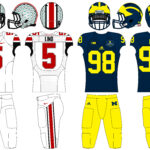Diving into the vibrant world of college football uniforms, we explore the unique story of the Hawaii Warriors Uniforms. From the early days to their modern look, the Warriors have showcased a variety of styles, reflecting both their island heritage and evolving athletic identity. Let’s take a journey through the years and witness the transformations of these iconic college football jerseys.
The story begins in the 1970s. While the University of Hawaii existed prior, it wasn’t until this decade that they began consistent collegiate play. In these early years, the Warriors sported a simple yet classic look: an all-green uniform. This minimalist design featured clean white numbering and was topped off with a gold helmet. This initial Hawaii Warriors uniform established a foundation before the team embraced more distinctive styles.
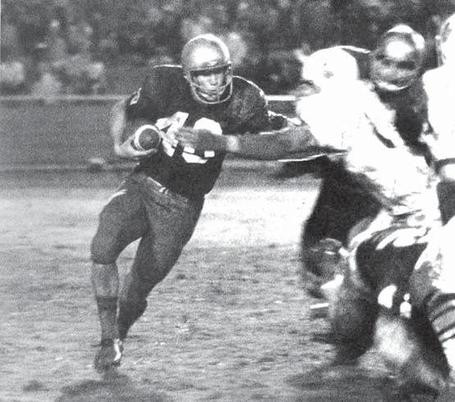 Sherrer_medium
Sherrer_medium
An early example of the Hawaii Warriors uniform, showcasing the simple green and gold design of the 1970s.
By 1974, a significant shift occurred, marking the arrival of what many consider the quintessential Rainbow Warriors uniforms. While a full uniform example from this exact year is elusive, the helmet from 1974 reveals the emerging aesthetic. It featured a stylized Hawaiian warrior, seemingly surfing or running on a rainbow wave. This imagery perfectly encapsulated the island spirit and began to define the team’s visual identity.
A 1974 Hawaii Warriors helmet displaying the iconic “surfing warrior” logo on a rainbow wave.
The following year, this vibrant theme extended to the entire uniform. The green jerseys were enhanced with red, yellow, and white stripes, adding a splash of color. Complementing the tops, the white pants featured matching green, red, and yellow stripes down the sides. This era of Hawaii football uniforms was bold and instantly recognizable. Falaniko Noga, pictured in action, provides a glimpse of this energetic design.
 Noga_medium
Noga_medium
Falaniko Noga in action, showcasing the colorful Rainbow Warriors uniform with multi-colored stripes.
Over time, the multi-colored stripes evolved into a simpler white stripe, streamlining the look while retaining the core rainbow theme. This iteration of the Rainbow Warriors uniforms persisted even with a significant helmet change in 1982. The “surfing warrior” was replaced with a stylized “UH” logo, but the rainbow element was maintained. This helmet design and the simplified striped uniforms remained in place for a remarkable sixteen seasons, demonstrating the look’s staying power. Quarterback Tipton illustrates this refined, non-rainbow stripe version.
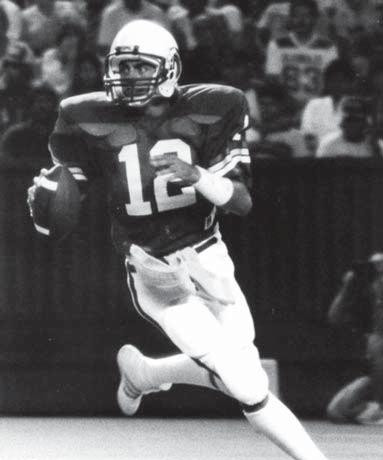 Tipton_medium
Tipton_medium
Hawaii Warriors quarterback Tipton wearing the uniform with simplified white stripes and the “UH” helmet logo.
Interestingly, despite the simplification of stripes on some uniform elements, the athletic department reintroduced the full rainbow stripes across other apparel during this period. This era also marked the introduction of “Hawai’i” on the uniform itself, further emphasizing the team’s island identity. Travis Sims in a 1992 photo clearly displays this colorful and geographically proud uniform.
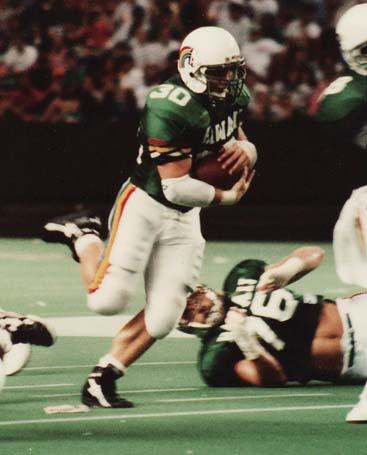 Travissims1992_medium
Travissims1992_medium
Travis Sims in a 1992 game, highlighting the return of rainbow stripes and the inclusion of “Hawai’i” on the uniform.
1998 marked a turning point. Following a winless season, the arrival of Coach June Jones ushered in a new era for Hawaii football, and with it, a significant uniform overhaul. The “Rainbows” moniker was phased out, officially becoming the Hawaii Warriors in 2001. Jones’ first year saw an immediate turnaround, culminating in an Oahu Bowl victory. The helmets became black, featuring a final appearance (or so it seemed at the time) of the surfing Hawaiian warrior. However, the main uniforms remained largely unchanged in this initial transition year.
 Oahubowl1999_medium
Oahubowl1999_medium
A glimpse of the Hawaii Warriors Oahu Bowl appearance in 1999, showcasing the black helmet with the surfing Hawaiian warrior logo.
The following year brought even more dramatic changes. The Warriors embraced a different aspect of Hawaiian culture, moving away from the cartoonish warrior and rainbows. A bold, island-style “H” logo was introduced on green helmets (with silver helmets used for away games from 2005-2007). Solid green uniforms made a comeback, now featuring island-inspired bands at the bottom of the jerseys, as seen in this image of Warren Jones.
 Warrenjones1988_medium
Warrenjones1988_medium
Warren Jones wearing the Hawaii Warriors uniform with the island-style “H” helmet and island band jersey design.
In 2008, Under Armour took over as the uniform provider, further modernizing the Hawaii Warriors uniforms. The tapa pattern, representing traditional island designs, was expanded from just the numbers to the sleeves. Home uniforms shifted to a black and green color scheme, with a green and black alternate option also available. “HAWAI’I” was prominently displayed across the upper chest of the jerseys. This marked a distinctly contemporary chapter in the uniform’s evolution.
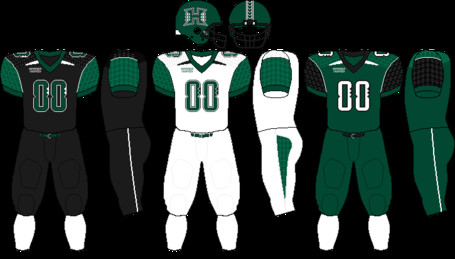 Wac-uniform-uh_medium
Wac-uniform-uh_medium
The modern Under Armour Hawaii Warriors uniforms, featuring tapa patterns and a black and green color scheme.
The journey of Hawaii Warriors uniforms reveals a fascinating interplay of tradition and change. From the vibrant rainbows and surfing warrior to the modern tapa-inspired designs, the uniforms have consistently reflected the unique cultural context of Hawaii. While the “Rainbow Warrior” era holds a special place in the hearts of many fans, the contemporary designs embrace a different facet of island identity. Looking ahead, while significant changes may be less likely due to long-term apparel contracts, the possibility of throwback “Rainbow Warrior” uniforms for special occasions remains an appealing prospect, blending the rich history with the current aesthetic.

